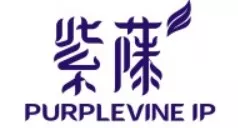- with readers working within the Banking & Credit, Business & Consumer Services and Retail & Leisure industries
Overview of Chinese University Patents
Chinese universities have experienced a significant increase in patent activity over the past decade. The number of patent applications filed by these institutions surged from 106,000 in 2012 to 367,000 in 2021, a remarkable growth of 246.2%. Additionally, the number of patents granted to Chinese universities increased from 69,000 in 2012 to 308,000 in 2021, a substantial 346.4% increase. During this period, Chinese universities consistently held the top globally in patent applications and grants, especially in emerging fields like semiconductor devices, photovoltaic materials, and third-generation semiconductors.
Chinese universities have outpaced their U.S. counterparts in patent applications. Even if you add up the annual patent applications of the top ten U.S. university applicants, they still fall short of the numbers from a single Chinese university. However, despite this impressive volume of patent applications, Chinese universities still need to translate them into commercial success effectively. This is a concern given the global rise in trade protectionism and the need to leverage intellectual property more effectively.
Understanding the U.S. Approach to Patent Utilization
In the United States, the Bayh-Dole Act, enacted in 1980, played a pivotal role in shaping the patent landscape at universities. It aimed to incentivize innovation by allowing universities to retain ownership of patents from federally funded research. However, despite this advantageous framework, many U.S. universities struggle to derive significant revenue from their patents. A study conducted by the Brookings Institution indicated that approximately 80% of U.S. universities did not generate substantial income from licensed patents during the first decade of the 21st century. Moreover, only a tiny fraction of universities earned most of their licensing revenue from a handful of patents, often in fields like pharmaceuticals or biotechnology. The Bayh-Dole Act facilitated patent ownership but did not guarantee substantial income for most universities.
Recently, the U.S. patent landscape has seen a shift in strategy among some universities. They have formed collaborative patent management entities, like the University Technology Licensing Programs (UTLPs), where multiple universities pool their patents in emerging fields such as the Internet of Things, big data, and AI. This approach seeks to complement universities' strengths in different areas, potentially improving the effectiveness of patent monetization.
Another strategy adopted by some U.S. universities involves patent litigation. For instance, the California Institute of Technology (Caltech) has filed numerous patent infringement lawsuits, leading to significant settlements with companies like Apple and Broadcom, amounting to billions of dollars. Such litigious approaches aim to assert intellectual property rights and generate substantial revenue.
Persistent Challenges in Chinese University Patent Utilization
Chinese universities have undoubtedly made substantial strides in patent activities, marked by a significant increase in patent applications and grants. However, the full utilization of these patents remains a daunting challenge.
Quality vs. Quantity: While China has amassed an impressive number of patents, concerns persist regarding the quality of these patents. Many are yet to demonstrate the essential, commercially viable technologies required for successful commercialization.
Post-Patent Inactivity: Traditionally, Chinese universities have focused primarily on front-end research and development, often overlooking post-patent activities such as licensing, enforcement, and commercialization. This disparity between quantity and quality, as well as insufficient post-patent efforts, continues to impede progress.
Limited Patent Enforcement: Chinese universities rarely initiate patent litigation or actively assert their intellectual property rights, even when holding valuable patents. This passiveness has resulted in missed opportunities for revenue generation.
Awareness and Mindset: Altering the mindset of Chinese universities to view themselves as patent rights holders who should actively safeguard their patents remains a significant hurdle. Many institutions continue to lack an assertive stance in defending their patent rights.
Despite the Chinese government's efforts to address these issues, including the 2020 release of "Opinions on Improving the Quality of Patents in Higher Education Institutions to Promote Transfer and Application," the landscape is still overshadowed by numerous "sleeping patents."
In reality, many of China's university patents remain dormant, untapped for their potential contribution to technological innovation and economic growth. The challenges are substantial, and while steps have been taken to address them, the journey toward fully realizing the value of university patents in China is ongoing and marked by persistent hurdles.
Conclusion
Amid increasing uncertainties such as trade protectionism and a trend toward deglobalization, establishing a robust patent system has become a consensus across Chinese society. Chinese universities are expected to play a more crucial and proactive role in this endeavor. However, these universities currently lack significant experience in patent operations.
By leveraging their expertise, foreign enterprises can forge stronger collaborative ties with Chinese universities. This collaboration can encompass technology transfer agreements, joint market expansion initiatives, investments, equity partnerships, intellectual property services, and consultations.
Engaging in patent operations partnerships with Chinese universities can revitalize a vast reservoir of dormant patents held by these institutions. Simultaneously, foreign enterprises can access cutting-edge technologies and innovative outcomes, expand their market presence, bolster their competitive edge, and achieve mutually beneficial growth. This symbiotic relationship offers a win-win scenario for all parties involved.
The content of this article is intended to provide a general guide to the subject matter. Specialist advice should be sought about your specific circumstances.


